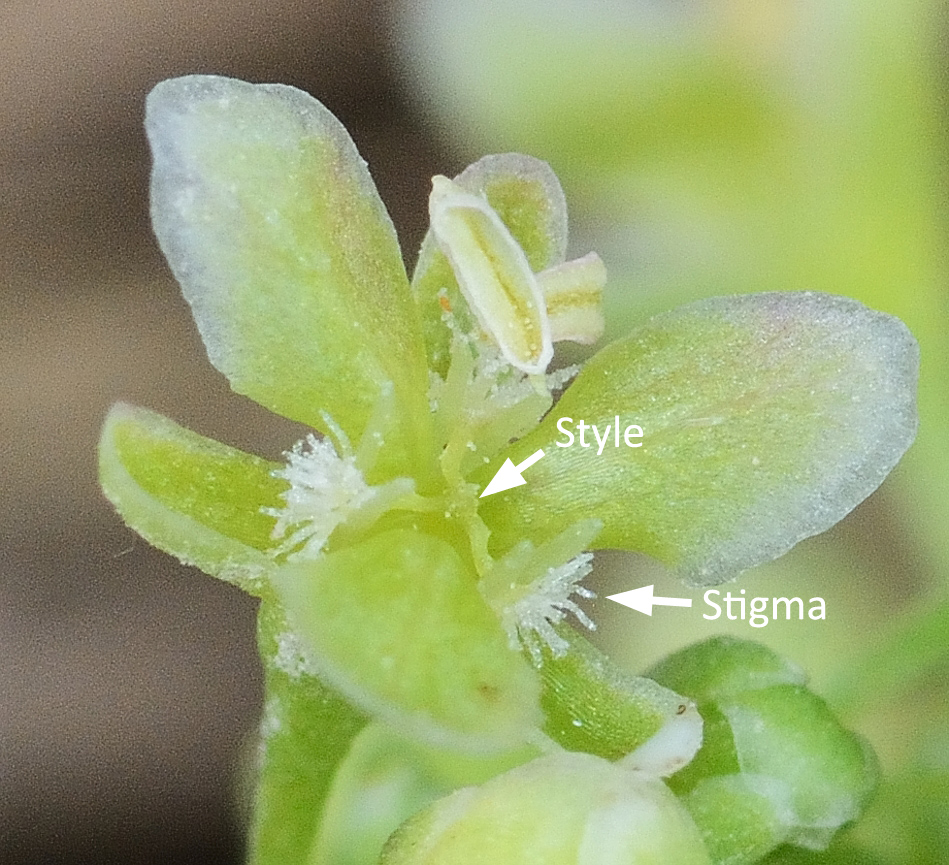Rumex occidentalis (Western Dock) - photos and description





Basal leaf in above photo

Basal leaf in above photo

Stem leaf in above photo




Pedicels without joints

Each flower has 6 stamens (ending with an anther)

Each flower has 3 styles (ending with a stigma)
Origin: Native.
General: Stout, erect, mostly single-stemmed perennial. Stem glabrous.
Flowers: Inflorescence tall and narrow. Flowers perfect, only 3 mm long, greenish in colour and growing in panicles. There are two whorls of sepals, the outer whorl oblong and smaller, the inner whorl ovate and larger. Flowers have 6 stamens and 3 styles.
Fruit: Fruit is a three-sided achene, each side triangular in shape and known as a valve. The valves are entire to lightly erose (irregularly toothed). the grains (tubercles) are unequal in size, one grain noticeably larger than the other two. The largest grain is 1/2 the length of the valve. We measured a valve at 5 mm long by 4 mm wide, a large tubercle at 2.5 mm long and a small tubercle 1.5 mm long.
Leaves: Leaves alternate, lanceolate, the margins often undulate (wavy), with a cordate or truncate base. We measured a basal leaf at 23 cm long by 7 cm wide, and a stem leaf at 15 cm long by 4 cm wide. Leaves reduced in size upwards.
Height: Height is listed in Budd's Flora to 100 cm, we measured plants to 135 cm tall.
Habitat: Moist ground, ditches in eastern Saskatchewan.
Abundance: Uncommon.
How to identify this species: Pedicels not jointed, 0 grains per fruit, leaves lanceolate and with a cordate base.
Synonym: Listed in some of the field guides we use as Rumex aquaticus.
When and where photographed: Photos taken July 11 and 13th, moist ditches alongside grid roads about 225 km northeast of our home in Regina, SK.